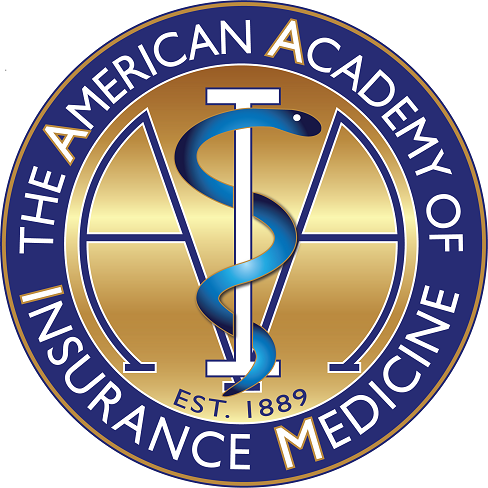The Future of the Journal of Insurance Medicine and AAIM
For insurance medicine to be recognized and accepted by its peers in the medical community as a viable medical specialty, 2 elements are necessary: a core, evidence-based knowledge competency, and a peer-reviewed scientific journal to exhibit our science of risk selection not only to members but also to the national and international medical community.
Our website states, the American Academy of Insurance Medicine (AAIM) believes that medical science, especially the science of mortality and morbidity is the basis for the practice of insurance medicine. Our Mission Statement further states, “our focus is education and research involving the science of risk selection, etc” Our core body of knowledge for medical directors, updated in November 2023, has 10 points related to mortality.
The Journal of Insurance Medicine (JIM), under our new Editor-in-Chief, Dr. Rod Richie, is in the process of resuscitation and hopefully can be resurrected to its former national and international prominence. However, our Journal will not ultimately be viable unless AAIM members contribute their knowledge and expertise to the Journal. If we do not expose our membership to our core competency and knowledge base, then who will provide future material for our Journal? Do we want most scientific mortality articles authored by non-industry contributors? This is not a proud advertisement of our industry’s core competency and membership. The JIM should not be composed of obscure electrocardiograms or case reports unless they include mortality estimates and underwriting suggestions. A necessary requirement of a scientific journal is the stimulation of the reader's intellectual curiosity generating letters to the editor commenting on published articles. Can anyone recall the last Letter to the Editor?
I am positing that AAIM has deemphasized its medical science over the past years and lost its public image—the Journal of Insurance Medicine. We need to recall our history and the rise and fall of the golden age of the science of insurance medicine. In the late 1970s, 2 AAIM physician members, Drs. Richard Singer and John Elder ushered insurance medicine into the mainstream of medical science.
Dr. Singer was an ardent proponent of evidence-based mortality projections and its direct application to insurance medicine—predicting life expectancy. He rejuvenated the mortality course both to expose the membership to the understanding of mortality necessary for work proficiency and the need for authorship of mortality articles to promote our specialty. In addition to teaching the rigorous annual mortality course required for board certification, he served as a special consultant offering 13 advanced mortality courses in locations throughout the United States. Under his instruction, insurance medicine demonstrated our evidence-based core competency and knowledge base.
To export our core competency to the medical community, Dr. John Elder transitioned our non-existent public face from a 4-page newsletter to the creation of the Journal of Insurance Medicine, a quarterly, peer-reviewed, international journal. He vigorously solicited mortality-related submissions from international academic institutions, epidemiologists, and members of the life insurance community. One issue of JIM (2005;37:1-2), entitled Life Expectancy Issue, was devoted to articles on mortality. JIM was a vibrant publication in the medical community. In the past, at the annual AAIM meeting, a member was awarded the W. John Elder Award for consistent, original, mortality-related contributions. Can anyone recall the last recipient?
During our golden age, the name of our organization was changed from the Association of Life Insurance Medical Directors of America (ALIMDA) to the Academy of Insurance Medicine (AAIM) to reinforce we belong in the international medical scientific community.
Golden ages have self-limited longevity. However, they leave legacies for future generations. AAIM and insurance medicine must again nurture and continue this invaluable legacy.
As our self-professed medical science—mortality—is disappearing, so has our member’s exposure and interest, with few contributions to the JIM from our member medical directors. Fortunately, the annual and triennial mortality courses have survived as the remaining pillars of our science and remain a requirement for diplomate status. But is it producing authors contributing to JIM as it did in the past?
Where do ratings in medical impairment manuals come from? Certainly not from the ether surrounding us, but from critical analysis of current, clinical articles in peer-reviewed medical journals. Understanding mortality analysis is essential in translating the results of these publications into updated entries in impairment manuals. Manual ratings that are not evidenced-based fail both scientific and regulatory scrutiny.
The lack of research and publicizing our core discipline in medical literature and demonstrating this discipline to our company’s senior management has led to the progressive downgrading of medical departments. Nurses continually replace physicians. Many medical departments are no longer independent but report to other departments unrelated to our function in the company. We are losing, and in many cases have lost, our autotomy. Unfortunately, this trend is irreversible.
At our annual meetings scientific mortality presentations are almost nonexistent, with our core replaced by hot topics de jour. Have we strayed from our mission? Past annual meetings featured speakers from our industry. Now we rely primarily on an outside vendor or academic institution to sponsor and populate meeting speakers who have no concept of our science. Are our members that uninteresting?
Are we regressing to being an association and not a scientific academy? We need to reintroduce our core principles to members to stimulate interest and to contribute scientific mortality-based presentations at our annual meetings and articles to the Journal of Insurance Medicine.
Contributor Notes
